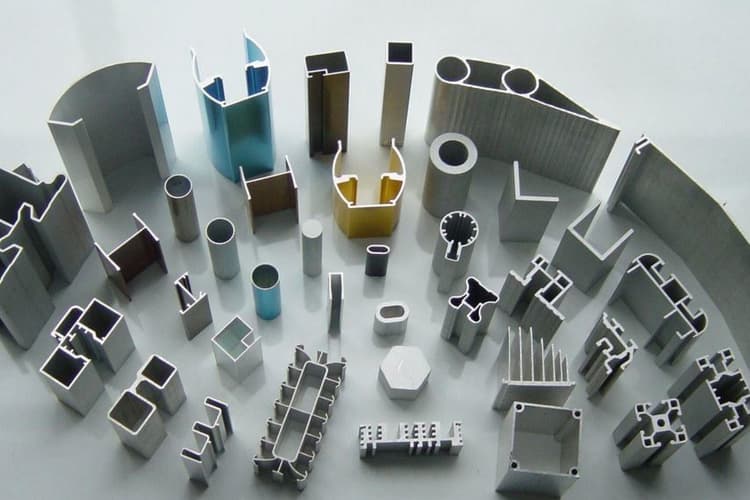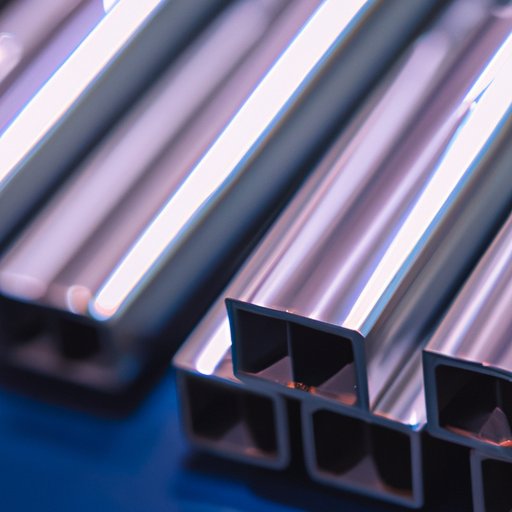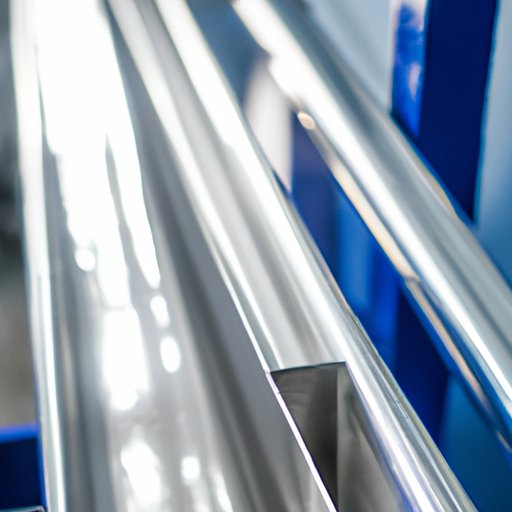Content Menu
● Introduction to Aluminum Extrusion Strength
● Understanding Structural Aluminum Load Bearing
>> Aluminum Framing System Durability
>> Extruded Aluminum Weight Limits
● Aluminum Profile Load Calculations
>> Strength-To-Weight Ratio Of Aluminum Extrusions
● Heavy-Duty Aluminum Structural Framing
>> Aluminum Extrusion Design Factors
● Maximum Load For Aluminum Profiles
● Applications Leveraging Aluminum Extrusion Strength
● Innovations in Aluminum Extrusion Technology
● Considerations for Selecting Aluminum Extrusions
● Conclusion
● Frequently Asked Questions
>> 1. What is the typical weight capacity of a standard aluminum extrusion?
>> 2. How does the length of an aluminum extrusion affect its load-bearing capacity?
>> 3. Can aluminum extrusions be as strong as steel in structural applications?
>> 4. How do I determine the right aluminum extrusion for my load-bearing needs?
>> 5. Are there ways to increase the load-bearing capacity of an existing aluminum extrusion?
Introduction to Aluminum Extrusion Strength
Aluminum extrusions have become increasingly popular in various industries due to their unique combination of strength, lightweight properties, and versatility. One of the most common questions that arise when considering aluminum extrusions for structural applications is, "How much weight can aluminum extrusion hold?" This comprehensive guide will delve into the factors that influence the Weight Capacity Of Aluminum Profiles and explore the remarkable Strength-To-Weight Ratio Of Aluminum Extrusions that makes them an excellent choice for many load-bearing applications.
Understanding Structural Aluminum Load Bearing
When it comes to Structural Aluminum Load Bearing, several factors come into play. The load-bearing capacity of aluminum extrusions depends on various elements, including the profile design, alloy composition, and the specific application requirements. To fully appreciate the capabilities of aluminum extrusions, it's essential to understand the fundamental principles behind their strength and durability.

Aluminum Framing System Durability
Aluminum Framing System Durability is a key consideration when evaluating the weight-bearing capacity of extrusions. The inherent properties of aluminum, such as its corrosion resistance and ability to maintain strength in various environmental conditions, contribute to the long-term performance of these structural elements. This durability ensures that aluminum extrusions can maintain their load-bearing capabilities over extended periods, making them ideal for both temporary and permanent structures.
Extruded Aluminum Weight Limits
Determining the Extruded Aluminum Weight Limits requires a thorough understanding of the specific profile and its intended use. While aluminum extrusions can support significant loads, it's crucial to consider factors such as the length of the extrusion, the distribution of the load, and any potential stress points in the design. Engineers and designers must carefully evaluate these factors to ensure that the chosen aluminum profile can safely handle the required weight without compromising structural integrity.
Aluminum Profile Load Calculations
To accurately determine the weight-bearing capacity of aluminum extrusions, engineers employ sophisticated Aluminum Profile Load Calculations. These calculations take into account various factors, including:
1. Profile geometry
2. Wall thickness
3. Alloy properties
4. Load distribution
5. Safety factors
By considering these elements, engineers can provide precise estimates of how much weight a specific aluminum extrusion can hold under different conditions.
Strength-To-Weight Ratio Of Aluminum Extrusions
One of the most significant advantages of aluminum extrusions is their exceptional Strength-To-Weight Ratio Of Aluminum Extrusions. This property allows for the creation of lightweight yet robust structures that can support substantial loads. The high strength-to-weight ratio of aluminum makes it an ideal material for applications where weight reduction is critical, such as in the aerospace and automotive industries.
Heavy-Duty Aluminum Structural Framing
For applications requiring significant load-bearing capabilities, Heavy-Duty Aluminum Structural Framing offers a compelling solution. These specialized extrusions are designed to handle greater loads while maintaining the benefits of aluminum, such as corrosion resistance and ease of fabrication. Heavy-duty aluminum profiles often feature thicker walls, reinforced geometries, and may utilize higher-strength alloys to achieve the necessary load-bearing capacity.
Aluminum Extrusion Design Factors
Several Aluminum Extrusion Design Factors influence the weight-bearing capacity of a profile:
1. Cross-sectional shape: The geometry of the extrusion plays a crucial role in its strength. I-beams, box sections, and other engineered shapes can significantly enhance load-bearing capabilities.
2. Wall thickness: Increasing the wall thickness of an extrusion can improve its strength and rigidity, allowing it to support greater loads.
3. Alloy selection: Different aluminum alloys offer varying strength properties. Choosing the right alloy for the application is essential for optimal performance.
4. Heat treatment: Proper heat treatment can enhance the mechanical properties of aluminum extrusions, increasing their strength and durability.
5. Reinforcement techniques: In some cases, additional reinforcement methods, such as internal ribbing or external bracing, can be employed to increase load-bearing capacity.

Maximum Load For Aluminum Profiles
Determining the Maximum Load For Aluminum Profiles requires careful consideration of all the factors mentioned above. While it's challenging to provide a one-size-fits-all answer, some general guidelines can be helpful:
1. Standard aluminum extrusions can typically support loads ranging from 1,000 to 6,000 pounds per square inch (PSI), depending on the specific design and alloy.
2. Heavy-duty aluminum profiles can handle even greater loads, sometimes exceeding 10,000 PSI.
3. The length of the extrusion and the way the load is applied (e.g., point load vs. distributed load) significantly impact the maximum weight capacity.
4. Safety factors must always be considered when calculating maximum loads to ensure structural integrity and prevent failure.
It's important to note that these figures are general estimates, and specific applications should always be evaluated by qualified engineers to determine the exact load-bearing capacity of an aluminum extrusion.
Applications Leveraging Aluminum Extrusion Strength
The impressive strength and versatility of aluminum extrusions have led to their adoption in a wide range of industries and applications:
1. Aerospace: Aluminum extrusions are used in aircraft frames, wing structures, and interior components, where their high strength-to-weight ratio is crucial.
2. Automotive: Vehicle manufacturers utilize aluminum extrusions for chassis components, body frames, and crash management systems to reduce weight and improve fuel efficiency.
3. Construction: Aluminum framing systems are popular in building facades, curtain walls, and structural support for both commercial and residential projects.
4. Solar energy: The strength and corrosion resistance of aluminum make it ideal for solar panel mounting systems and support structures.
5. Material handling: Conveyor systems, workstations, and industrial equipment often incorporate aluminum extrusions due to their strength and modularity.
6. Transportation: Aluminum extrusions are used in the construction of trains, buses, and other mass transit vehicles to create strong, lightweight structures.
Innovations in Aluminum Extrusion Technology
As the demand for stronger and more efficient aluminum extrusions grows, manufacturers and researchers continue to innovate:
1. Advanced alloys: Development of new aluminum alloys with enhanced strength properties allows for even greater load-bearing capacities.
2. Composite extrusions: Combining aluminum with other materials, such as carbon fiber, creates hybrid extrusions with exceptional strength-to-weight ratios.
3. Optimized profile designs: Computer-aided design and finite element analysis enable the creation of highly efficient extrusion profiles that maximize strength while minimizing material usage.
4. Improved manufacturing processes: Advancements in extrusion technology, including precision control and cooling techniques, result in extrusions with more consistent and superior mechanical properties.
Considerations for Selecting Aluminum Extrusions
When choosing aluminum extrusions for load-bearing applications, consider the following factors:
1. Load requirements: Clearly define the expected loads, including static and dynamic forces, to ensure the selected profile can handle the demands.
2. Environmental conditions: Consider factors such as temperature fluctuations, humidity, and exposure to corrosive elements that may affect the extrusion's performance.
3. Regulatory compliance: Ensure that the chosen aluminum extrusions meet relevant industry standards and building codes.
4. Cost-effectiveness: While aluminum extrusions offer many benefits, evaluate the overall cost, including material, fabrication, and long-term maintenance expenses.
5. Aesthetics: For visible applications, consider the appearance of the extrusion and any required surface finishes or treatments.
6. Compatibility: Ensure that the selected aluminum extrusions are compatible with other materials and components in the overall design.
Conclusion
The question "How much weight can aluminum extrusion hold?" doesn't have a simple, universal answer. The load-bearing capacity of aluminum extrusions depends on a complex interplay of factors, including profile design, alloy selection, and specific application requirements. However, with proper engineering and design considerations, aluminum extrusions can support impressive loads while offering the benefits of lightweight construction, corrosion resistance, and versatility.
As technology continues to advance, the capabilities of aluminum extrusions are likely to expand further, opening up new possibilities for their use in load-bearing applications across various industries. By understanding the principles behind aluminum extrusion strength and working closely with experienced manufacturers and engineers, designers can harness the full potential of this remarkable material to create strong, efficient, and innovative structures.

Frequently Asked Questions
1. What is the typical weight capacity of a standard aluminum extrusion?
Answer: The weight capacity of a standard aluminum extrusion can vary widely depending on its design and alloy, but it generally ranges from 1,000 to 6,000 pounds per square inch (PSI). However, this can be higher for specially designed heavy-duty profiles.
2. How does the length of an aluminum extrusion affect its load-bearing capacity?
Answer: Generally, as the length of an aluminum extrusion increases, its load-bearing capacity decreases. This is due to the increased potential for bending or buckling under load. The relationship between length and load capacity is not linear and depends on factors such as the profile design and how the load is applied.
3. Can aluminum extrusions be as strong as steel in structural applications?
Answer: While steel typically has a higher strength-to-weight ratio than aluminum, properly designed aluminum extrusions can match or even exceed the performance of steel in many structural applications. The key lies in optimizing the profile design and selecting the appropriate alloy for the specific requirements of the application.
4. How do I determine the right aluminum extrusion for my load-bearing needs?
Answer: To select the appropriate aluminum extrusion for your load-bearing needs, consider factors such as the expected load (both static and dynamic), environmental conditions, length of the extrusion, and any specific design requirements. It's best to consult with a qualified engineer or aluminum extrusion manufacturer who can perform the necessary calculations and recommend the most suitable profile.
5. Are there ways to increase the load-bearing capacity of an existing aluminum extrusion?
Answer: Yes, there are several methods to increase the load-bearing capacity of an existing aluminum extrusion:
1. Adding reinforcements or bracing
2. Using multiple extrusions in parallel
3. Incorporating additional support structures
4. Applying composite materials for strengthening
However, any modifications should be carefully evaluated by a structural engineer to ensure they meet safety standards and do not compromise the integrity of the overall structure.
Come and contact us to shop! ! !






















